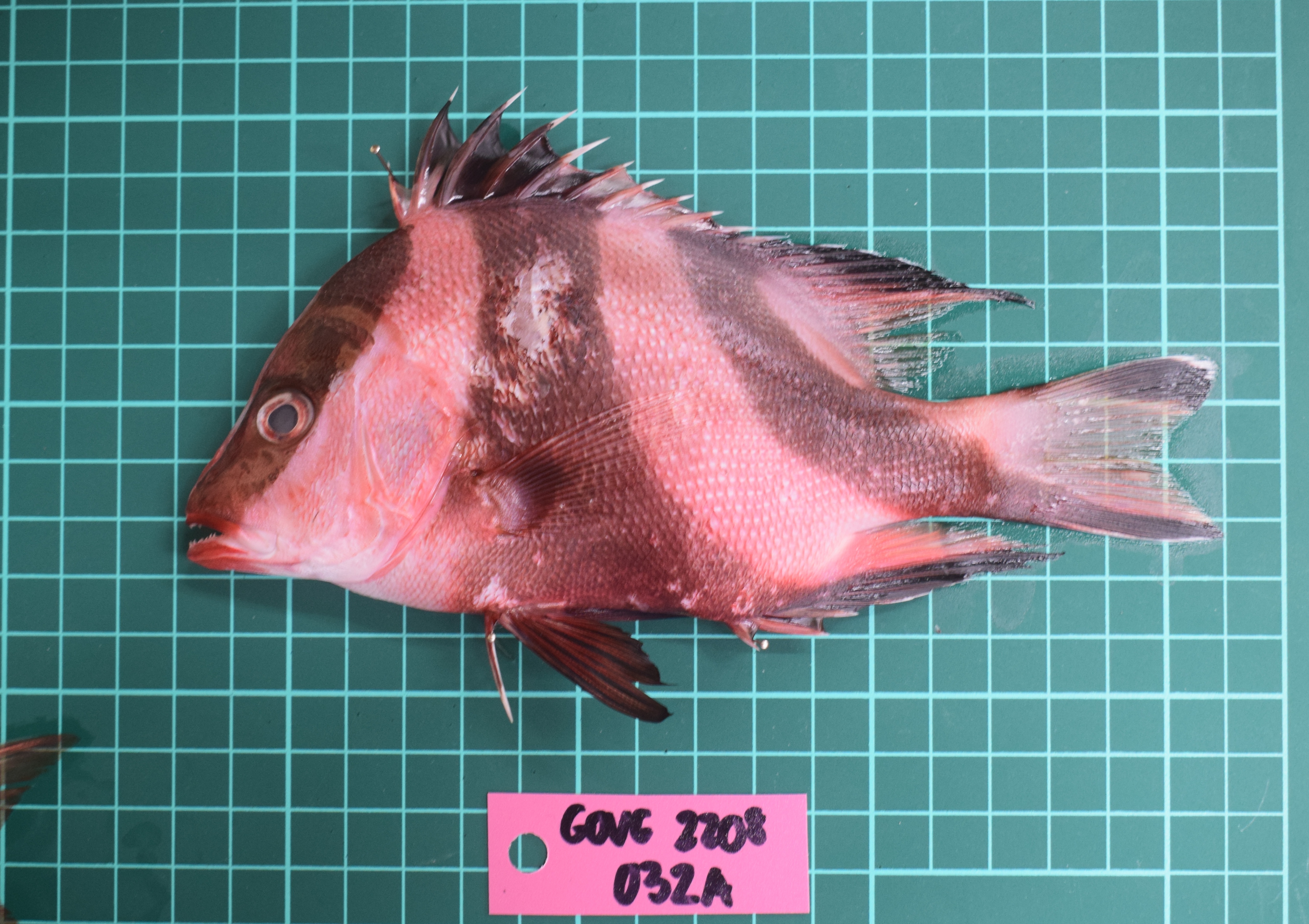(Emperor red snapper)
Marine; brackish; reef-associated; depth range 5 - 180 m . Tropical; 34°N - 35°S, 30°E - 171°E
Maturity: Lm 54.2, range 49 - ? cm Max length : 116 cm FL male/unsexed; ; common length : 60.0 cm TL male/unsexed; ; max. published weight: 32.7 kg ; max. reported age: 40 years
Dorsal spines (total): 11; Dorsal soft rays (total): 15 - 16; Anal spines: 3; Anal soft rays: 10. Dorsal profile of head steeply sloped. Preorbital bone broad. Preopercular notch and knob moderately developed. Scale rows on back rising obliquely above lateral line. Generally red or pink, darker on the back; fins are red except the pectorals which is pink. Juveniles and small adults have a dark red band from first dorsal spine through eye to tip of snout; a 2nd band from mid-dorsal fin to pelvic fin; a 3rd from base of last dorsal spine to caudal peduncle. Large adults become uniformly red . Note: (TL, cm) = 1.00 + 1.24 (SL, cm); n = 828 . Body depth 2.6-3.0 in SL . Body shape (shape guide): short and / or deep; Cross section: oval.
Adults occur in the vicinity of coral or rocky reefs , often over adjacent sand flats and gravel patches . Also trawled in deeper water on relatively flat bottoms. Juveniles are frequently commensal with sea urchins . Juveniles less than 20 cm long are common in near shore, turbid waters , in mangrove areas , or among both coastal and deeper water offshore reefs . Juveniles can also be found swimming amongst the spines of urchins in shallow coastal bays . They move to deeper waters as they grow larger , with large fish often moving into shallower water during the winter months ( Ref. 27260, 27264). They form schools of similar-sized individuals or are solitary . Feed on fishes, crabs, stomatopods, other benthic crustaceans and cephalopods. Marketed fresh, dried-salted and frozen . Commercially important but in certain regions of the Indian Ocean, large individuals are known to cause ciguatera poisoning .
Full article at FishBaseLeast Concern (LC); Date assessed:05 March 2015 (FishBase)
Please contact: Maybelle Fortaleza (University of the Philippines Mindanao) via email: "mafortaleza@up.edu.ph"



